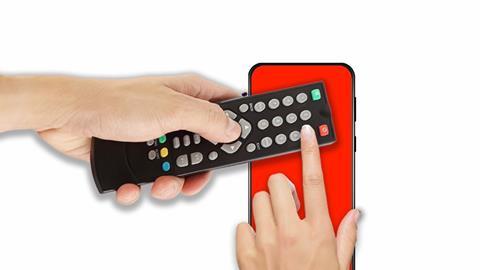Pierre de Lannoy at MiQ discusses how the industry can adapt to an internet-only TV environment

The momentum towards an all (or overwhelmingly dominant) internet-TV future is gaining momentum. The soaring rise in popularity of Free Ad Supported TV (FAST) channels is a clear signal that video delivery is going online-first.
The relaunch by ITV of its streaming hub ITVX (including a notable shift to VOD-first for scripted drama) and the tangible growth of live streamed sports (e.g on Prime Video, AppleTV+) are further signs that the tipping point has been breached. Traditional ‘internet’ services like YouTube are also quickly becoming ‘TV’ services. Even TikTok is launching a TV app.
“Imagine a world that is internet only,” BBC Director General, Tim Davie told the RTS in December. It isn’t hard to do – but it’s proving harder to achieve from an advertising standpoint. “There’s still a lot of live linear viewing but it is all been delivered online,” Davie added, suggesting that in little more than a decade, traditional broadcast TV and radio will be switched off and content choice will become infinite.
This future is here now. It is one where smart TVs – already in more than two-thirds of UK households - will have a critical role to play as the main entertainment gateway into the home. It’s one where consumers will slide seamlessly between OTT, CTV, SVOD, ATVOD, PVOD BVOD and so-on calling it all simply ‘telly’.
We call it Advanced TV. That’s a deceptively simple term that encapsulates all non-traditional TV delivery. But as you can tell by the bewildering alphabet soup of acronyms,the industry is a long way from speaking the same language.
Silos exist in every area of the marketing industry and it’s no different when it comes to Advanced TV.
From a technical perspective, Advanced TV is dominated by big broadcasters with walled gardens, and fragmented further by new ad platforms (Netflix and Microsoft; Twitch and Amazon, YouTube and DV360), all of which means that the sort of holistic view we’d love to see across the TV industry isn’t possible just now.
There are legitimate concerns. Given the tight GDPR restrictions, players are understandably cautious and protective of obtaining and sharing customer data. The ability to gauge the effectiveness of Advanced TV campaigns is holding back investment. Compared to the long-established buying and measurement patterns of the traditional linear TV advertising, Advanced TV advertising is a far more fragmented and opaque space.
What is agreed by broadcasters, content providers, agencies and brands alike is a need for common measurements and a gold standard currency that integrates all linear and nonlinear viewing in the UK.
The good news is that this is changing.
That Netflix signed up to Barb’s live and overnight ratings is a significant stride forward. The full launch of CFlight in 2023 (a major measurement-focused collaboration between the UK’s leading broadcasters) will be another big step. Likewise, the progress of Project Origin, the ISBA-backed initiative to build a cross-media measurement platform, shows that as an industry we’re moving in the right direction.
Advanced TV is democratising TV advertising for a whole slew of digital-first brands. Furthermore, Advanced TV offers a bridge between traditional brand-building TV campaigns and interactive sales activation.
Over the next year we will see further progress in forging a new industry built on a common language, common goals, common technologies and a common desire to create a bigger, bolder Advanced TV serving the needs of agencies, advertisers, broadcasters and the entire viewing audience.

Pierre de Lannoy is strategy director, EMEA at MiQ








No comments yet